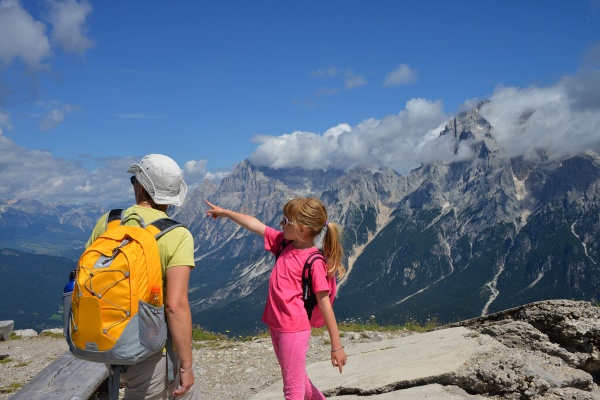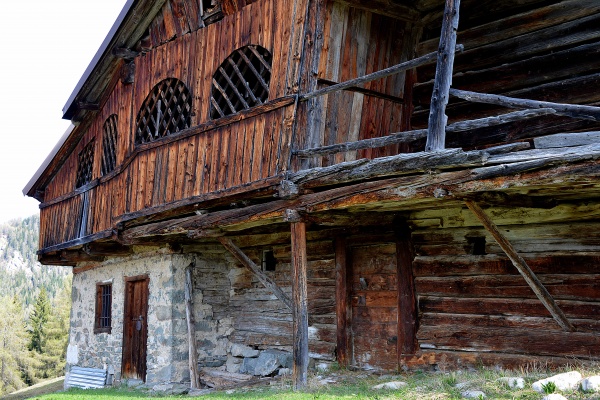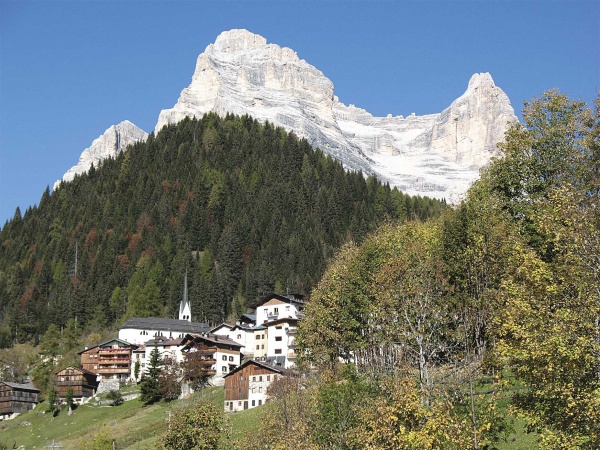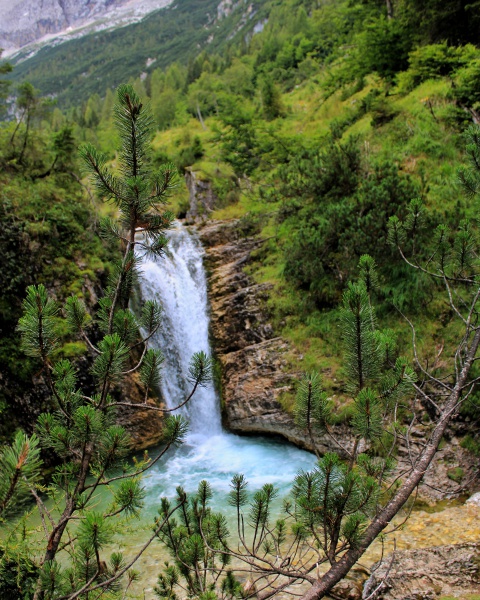This itinerary offers historical evidence (churches of Saint Giuseppe and Lorenzo at Brusadaz, casa Bortolotti at Costa) as well as lovely views overlooking the lower Val di Zoldo. There are scenes of agricultural life, starting from Pra Grant where you will see cows grazing, and in the Mas di Sabe-Iral you will also come across deer grazing.
From road n.251 in Rutorbol, slightly below the village of Fusine, turn into the narrow road (asphalted) which climbs up in a northerly direction towards Brusadaz, crossing open meadows (Pra Grant) with Mount Pelmo in the background. A half hour walk leads to the village of Brusadaz (1.380m), which sits at the bottom of the basin at the foot of Sass de Formedal; the village is famous for its good carpenters, for the many tabià (the traditional wood hay-lofts, called in dialect "tabià" or "mas") in excellent condition and also its beautiful small church built in 1693 dedicated to the Saints Joseph and Lawrence.
In the centre of the village the road splits into two: to the left/west it climbs up to Coi, to the right/east, it reaches Costa. Continue to the right towards the village of Costa (1425m), nearby, the houses are lined up facing the sun on the slopes of La Vizza, between Col Grant and Col Nero. The charming small church built in 1929 was built on a previous shrine dedicated to the B V Mary, while the eighteenth century house of the Bortolotti's, once famous as organ makers, is very characteristic.
From here a 15 minute walk along a forestry road leads to a panoramic point (1472m) where it is possible to enjoy the view overlooking all the mountain chain which closes Val di Zoldo on the south side (from the left: Sfornioi-Bosconero-Serra-Mezzodì-Tamer- S.Sebastiano and finally Moiazza-Civetta). Here you will find an ancient and characteristic hayloft (tabià), called “Mas de Sabe” which dates back to the XVI century and which during the 1930s was a meeting place among the youngsters throughout the valley for its popular balls. Descend in a south westerly direction, following a mule track which leads to Iral. Pass close to the Rotonda de le Dame, go down the steep slopes of Zaccagnin reaching Iral (1.260m, 30 minutes, ancient haylofts-tabià). From here follow the main road down to Rutorbol.
Tabià and Mas: The hay-lofts of Zoldo
The hay-lofts (tabià or mas) are the most characteristic element of Zoldan architecture. The oldest date back to the 14th-15th century when the living quarters, hay-loft and cow shed were all part of the same structure; after the 16th century, to avoid the danger of fires, the cow shed and hay-loft were separated from the house; on the ground floor with the cow shed made of stone and the hay-loft above made from larch wood. Nowadays with their original agricultural function abandoned, many have been tranformed into prestigious homes, especially in the area of Zoldo Alto, while maintaining their original exterior intact.
[contents: Unione montana Longaronese Cadore Zoldo]


















